This past week was a busy but good one — three different presentations related to Texas flora and fauna kept me at a nonstop pace for a while. But somewhere in there I managed to get a few pictures, too. On Wednesday I had the pleasure of talking about wildlife gardening with the Comal Master Gardeners 2013 class, and while in New Braunfels, I visited Landa Park. The Arboretum there is home to many very old and beautiful trees, and it gave me a chance to see what some of my younger (and as such still small) trees will hopefully look like one day. For example, my Anacuas are only about 5-6 feet tall, but hopefully as they blossom, literally and figuratively, they will be the delights of my garden and look like this:
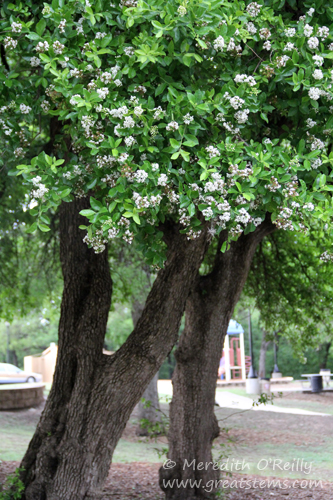
Anacua (Ehretia anacua)
And this:
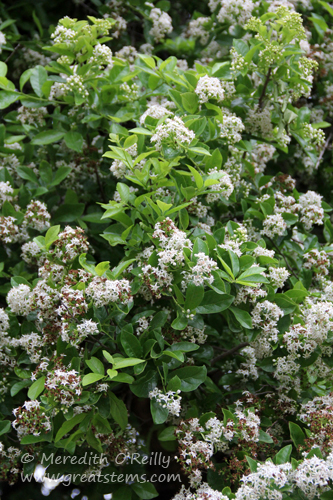
No blooming tree is complete without a close-up:
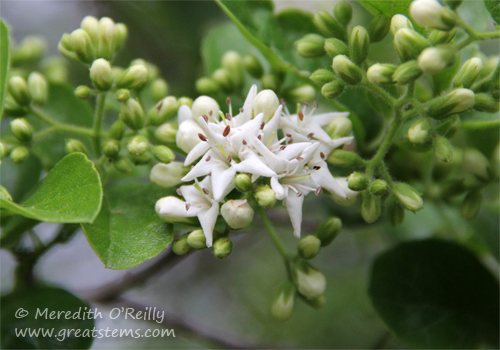
Seeing stars, like I am? Just look at those blooms!
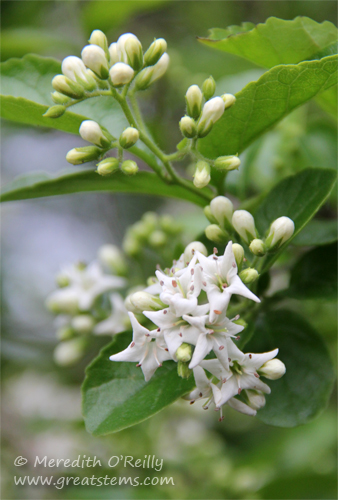
Do you see why I love them so? Actually, I adore them mostly for the sandpaper-like texture of their leaves, completely unexpected given their bountiful white star-like blooms and the delightful fragrance they emit. It’s just absolutely endearing that such a lovely plant could have such roughness overall. FYI, these plants grow in South Texas and Mexico, as far north as Austin. Don’t be fooled into thinking you want one, too, if you live up north!
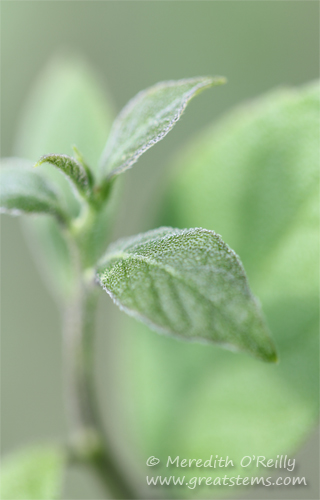
Someday I’ll be able to show you pictures of their edible orange and yellow berries, so beloved by birds (you can take a peek at the Wildflower Center’s image here). But at least I can show you the unusual fluted appearance of the trunk of a mature Anacua:
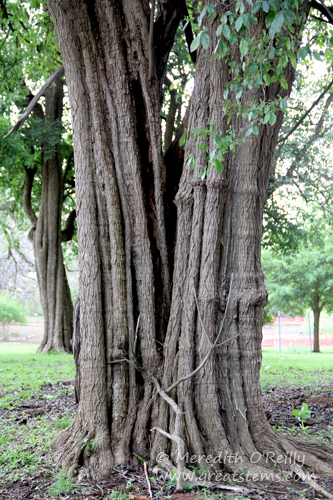
Such character!
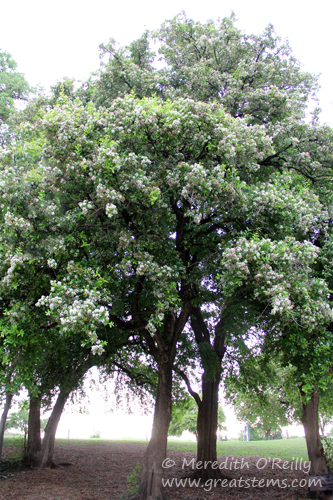
Here you can see a small grove of Anacuas near the Landa Park golf course.
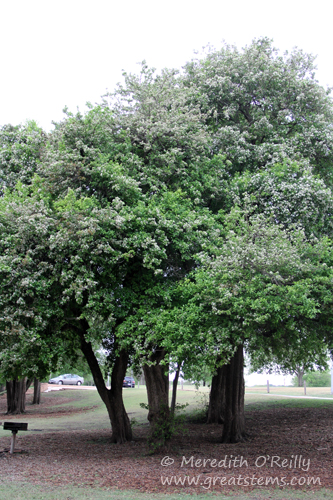
They really are gorgeous trees, and I’m so proud to have two in my yard. I would plant more if I could, but my other trees might get jealous (and actually, I’m starting to run out of room for big trees). Still, I can’t wait for them to get big.
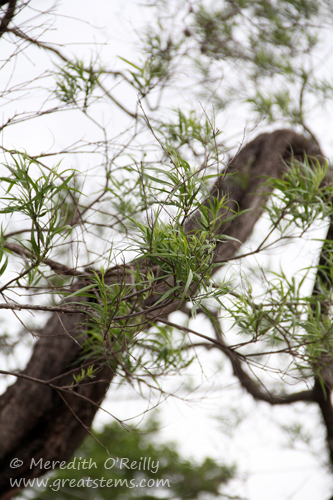
Desert Willow
Landa Park has many other beautiful tree specimens, including their historic Founder’s Oak, more than 300 years old (I didn’t have a chance to get a picture of it — alas!). Above is a very mature Desert Willow — I had no idea that eventually they take on a more gnarly appearance than a willowy one, but of course that endears them to me, too.
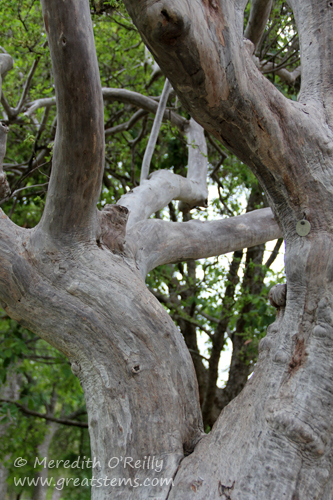
Texas Persimmon
Also surprising was the enormous size of this Texas Persimmon, whose trunk and branches remind me of Hulk Hogan.
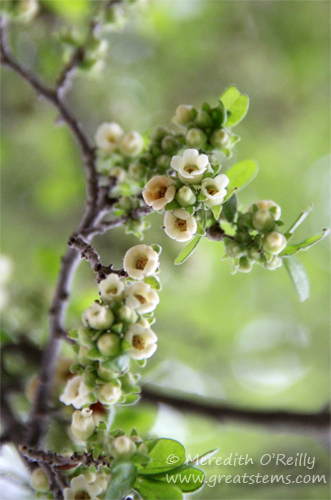
The tree’s tiny blooms will soon produce fruit, edible by birds and mammals (including us — mmmm, persimmon jelly). In comparison, my little backyard Texas Persimmons have a ways to go yet (but one of them did produce its first 2 fruits just last year).
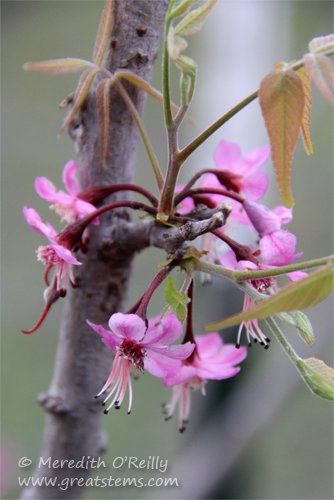
Mexican Buckeye
While many of the trees in Landa Park are decades to centuries old, young trees of a variety of species, such as the Mexican Buckeye in bloom above, have been planted in recent years in order to continue to further beautify and expand the diversity of the Arboretum. These plantings, as well as the ongoing care to maintain and monitor the health of all the park’s trees, is a combined effort of the city of New Braunfels, its Urban Forestry program, and many local garden clubs and organizations — they recognize the importance of trees to a community, and the results are simultaneously breath-taking and inspiring. Also underway is New Braunfels’ first EARIP project (Edwards Aquifer Recovery Implementation Program), in which they will work to restore habitat for the endangered fountain darter and other endangered Comal Springs species.
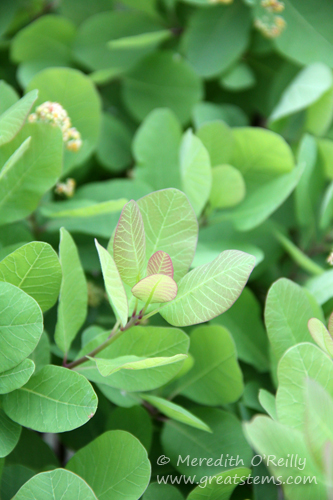 American Smoke Tree
American Smoke Tree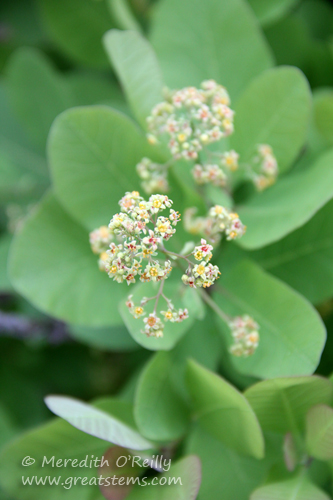
While Landa Park’s American Smoke Tree might still be young by tree standards, it still seems gigantic to the 1-2 foot tall specimens I have in my yard, so small that I’m still working to ensure they establish.
In all, Landa Park’s Arboretum is home to at least 55 species of trees, most of which are native. The Arboretum walk is 1.25-miles, and you can print a map here to take with you if you have a chance to visit. There’s history to many of the trees that were selected for the Arboretum, whether native or non-native.
I’ll end the tour with a big, old Cottonwood over by the river.
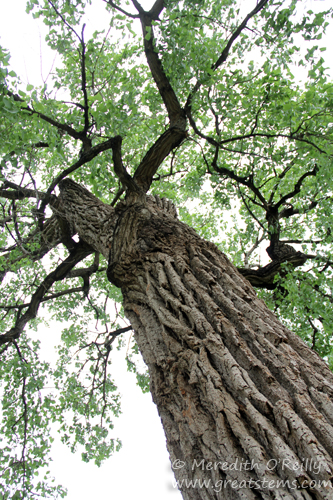
Even though I don’t personally grow a Cottonwood, as it is a riparian tree, I fell in love with the bark and had to share a pic. Cottonwoods are excellent shade providers, are great for erosion control, and they are a host plant for several species of butterflies.
It turns out that my quick tree tour wasn’t nearly long enough to satisfy me. I must go back soon.
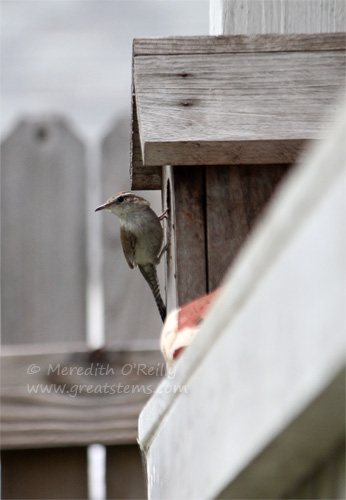 Mama and Papa Bewick’s Wrens, cavity nesters, chose to build their nest in a birdhouse by Kris’ patio this spring. Of course, last year they nested in the pocket of khaki shorts that had been hung out on a laundry line to dry. I guess they decided stability from the wind might be a better bet this time.
Mama and Papa Bewick’s Wrens, cavity nesters, chose to build their nest in a birdhouse by Kris’ patio this spring. Of course, last year they nested in the pocket of khaki shorts that had been hung out on a laundry line to dry. I guess they decided stability from the wind might be a better bet this time.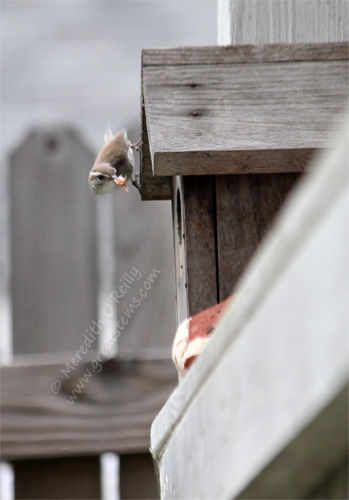
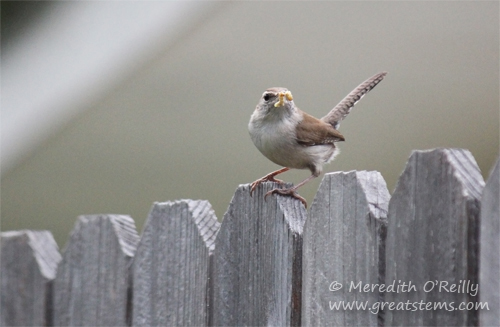
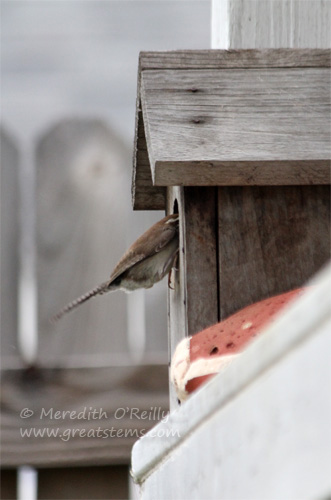
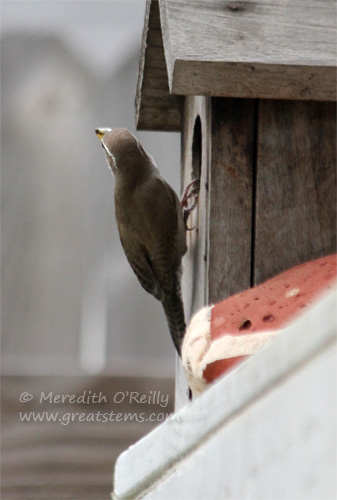 The attentive wren parents also kept a tidy house. Above, one parent can be seen removing a fecal sac. Many baby birds release their poop in a strong mucous membrane, or fecal sac, allowing parent birds to easily pick the membrane up in their bill and remove it from the nest.
The attentive wren parents also kept a tidy house. Above, one parent can be seen removing a fecal sac. Many baby birds release their poop in a strong mucous membrane, or fecal sac, allowing parent birds to easily pick the membrane up in their bill and remove it from the nest.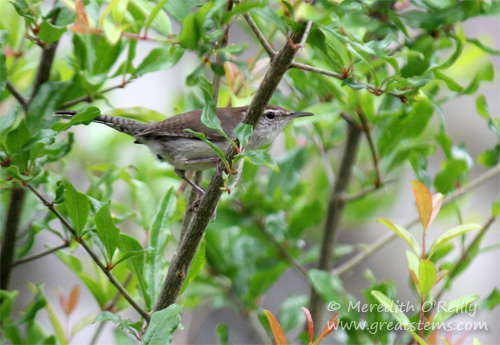 The wren parents always kept a careful eye on the nearby humans, but when they saw we were not a threat, they visited the nest box with regularity.
The wren parents always kept a careful eye on the nearby humans, but when they saw we were not a threat, they visited the nest box with regularity.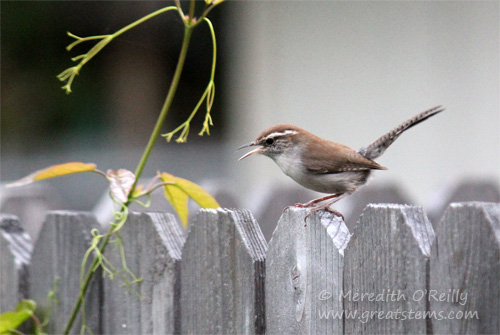 That is, until one woman lingered too long near the nest box, and the returning parent bird in frustration swallowed the insect it was carrying and proceeded to chee-chee-chee-chee angrily at the woman until she left the nest area.
That is, until one woman lingered too long near the nest box, and the returning parent bird in frustration swallowed the insect it was carrying and proceeded to chee-chee-chee-chee angrily at the woman until she left the nest area.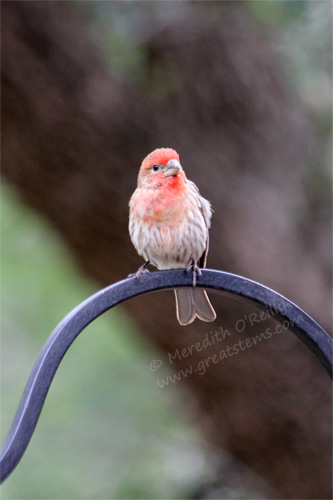 This beautiful male House Finch stood guard for several minutes watching over his mate while she feasted on seeds in a feeder. He’d cock his head this way and that, looking around constantly. He never took time to preen or anything else, though he did sing a little bit (causing me to coo back at him). I was most impressed with how seriously he held watch, and his mate only felt cause to react when the paranoid White-winged Doves on the front side of the fence suddenly flew up en masse — but seeing no concern from her mate, she went right back to eating.
This beautiful male House Finch stood guard for several minutes watching over his mate while she feasted on seeds in a feeder. He’d cock his head this way and that, looking around constantly. He never took time to preen or anything else, though he did sing a little bit (causing me to coo back at him). I was most impressed with how seriously he held watch, and his mate only felt cause to react when the paranoid White-winged Doves on the front side of the fence suddenly flew up en masse — but seeing no concern from her mate, she went right back to eating.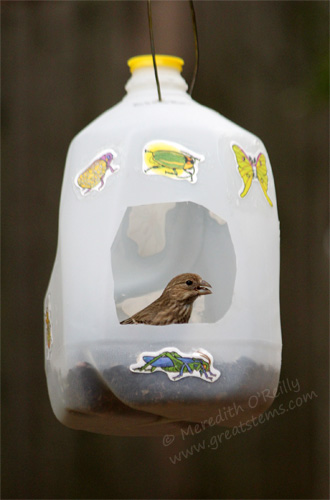 Here the female House Finch just sits inside the milk jug bird feeder, devouring black oil sunflower seeds. We’ve been having fun with kid projects. This is a simple version of a milk jug feeder, decorated only with stickers (held in place with non-toxic outdoor glue) — we have some fancier ones that are going to go out in the garden tomorrow, once the glue dries. On Friday, we’re having a bunch of kids over to make some for their own backyards. Fun!
Here the female House Finch just sits inside the milk jug bird feeder, devouring black oil sunflower seeds. We’ve been having fun with kid projects. This is a simple version of a milk jug feeder, decorated only with stickers (held in place with non-toxic outdoor glue) — we have some fancier ones that are going to go out in the garden tomorrow, once the glue dries. On Friday, we’re having a bunch of kids over to make some for their own backyards. Fun!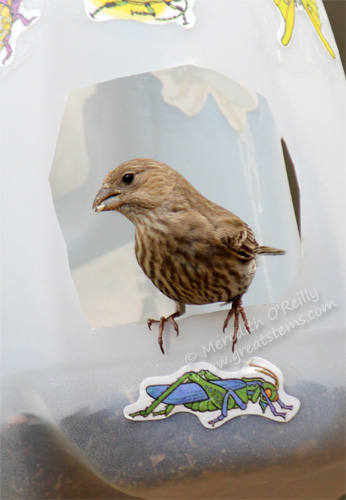
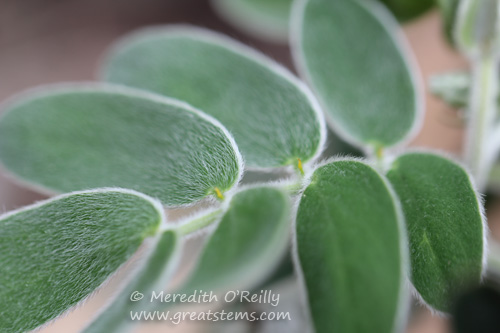 Its softness isn’t just alluring to the touch — the velvety hairs and light blue-green color catch the light so subtly that the leaves almost beckon you to reach out with your fingertips. In fact, it can be so distracting that you almost have to refocus your eyes, as if viewing a stereogram, to look beyond the leaves to see what might actually be munching on them.
Its softness isn’t just alluring to the touch — the velvety hairs and light blue-green color catch the light so subtly that the leaves almost beckon you to reach out with your fingertips. In fact, it can be so distracting that you almost have to refocus your eyes, as if viewing a stereogram, to look beyond the leaves to see what might actually be munching on them.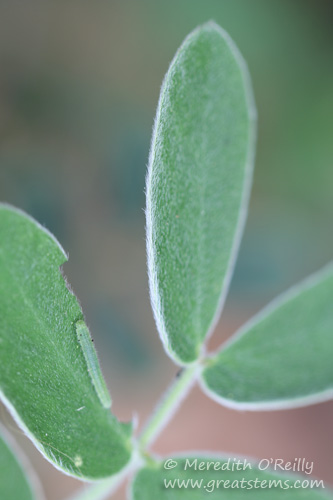
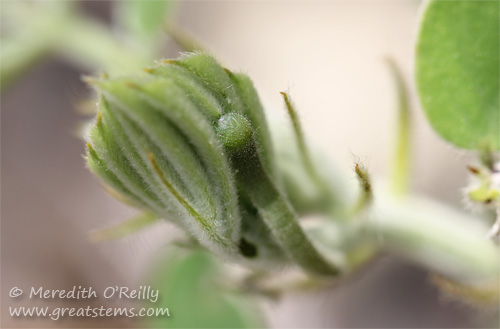
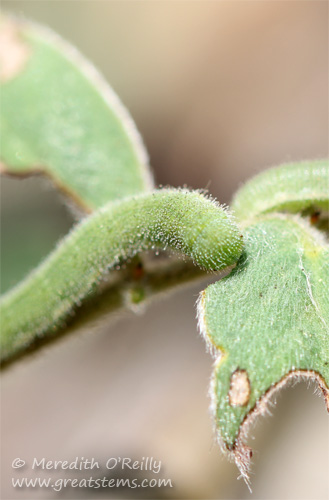
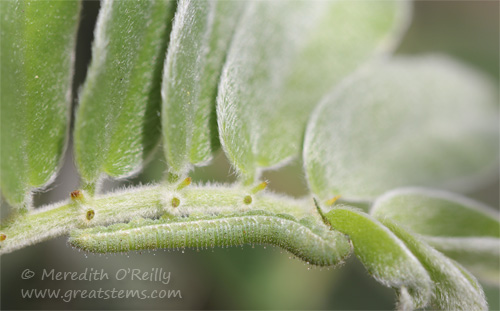
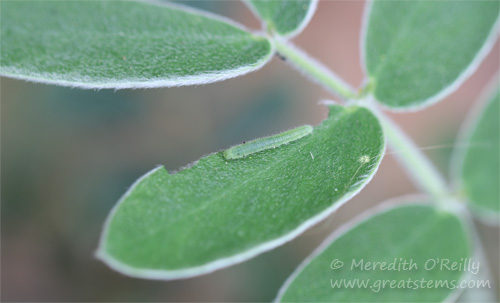 Other times, I found them along leaf edges, almost blending in with the light margins of the leaves.
Other times, I found them along leaf edges, almost blending in with the light margins of the leaves.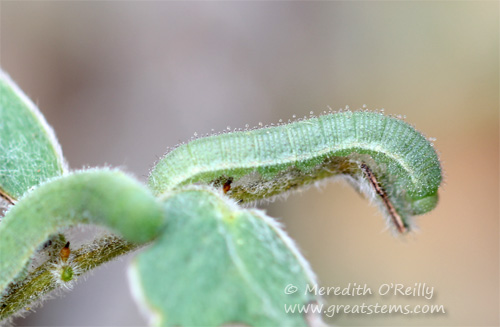
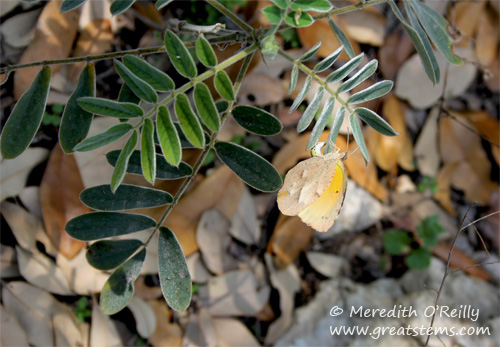
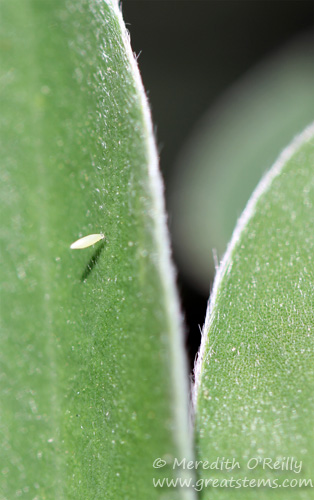
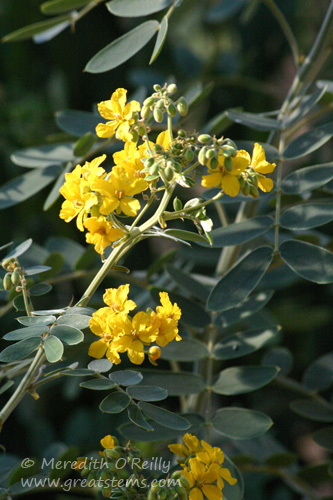
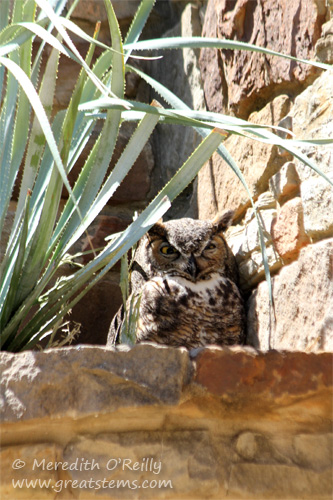
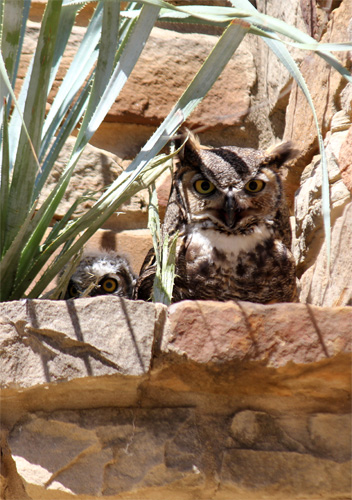 …the owlets start to stir. This year Athena has two owlets. I snapped pictures while I was at the Wildflower Center plant sale last weekend, and while I could see both owlets, only one was photo-accessible.
…the owlets start to stir. This year Athena has two owlets. I snapped pictures while I was at the Wildflower Center plant sale last weekend, and while I could see both owlets, only one was photo-accessible.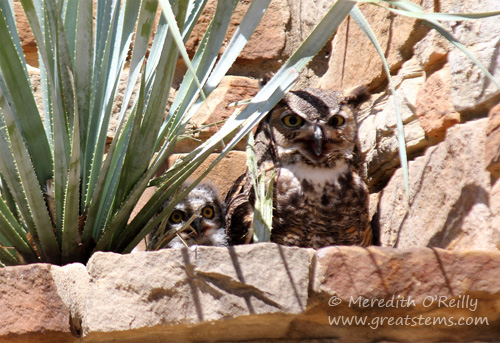
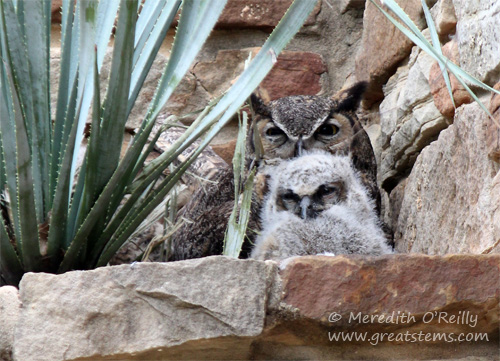
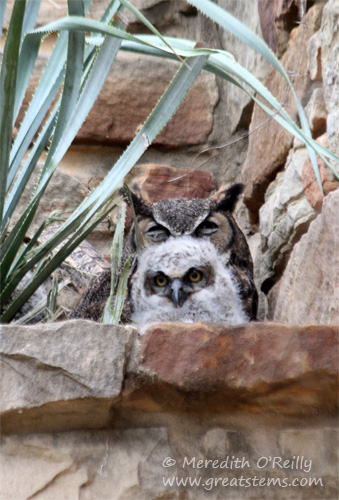
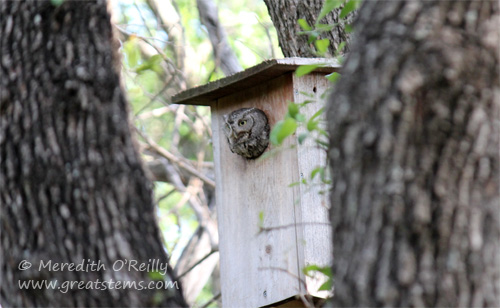
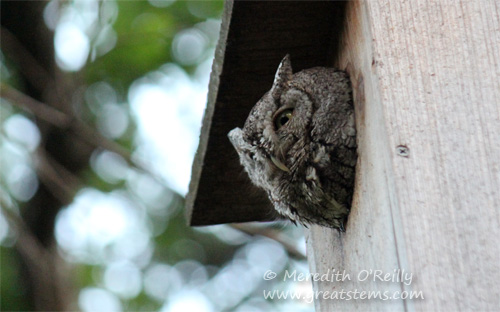
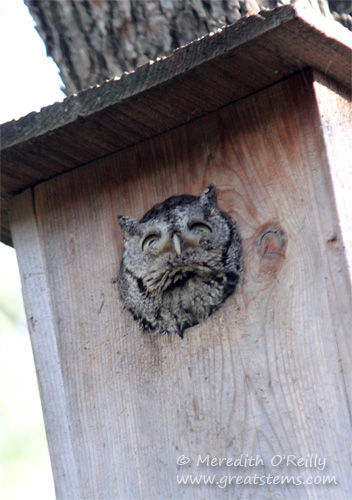 One time while I visited her, something in the sky caught mama’s attention, and I saw her go on guard. When she suddenly ducked into the house, I looked to see what alarmed her. The shadow flying overhead turned out to be a black vulture, but mama Screech Owl was not taking any chances.
One time while I visited her, something in the sky caught mama’s attention, and I saw her go on guard. When she suddenly ducked into the house, I looked to see what alarmed her. The shadow flying overhead turned out to be a black vulture, but mama Screech Owl was not taking any chances.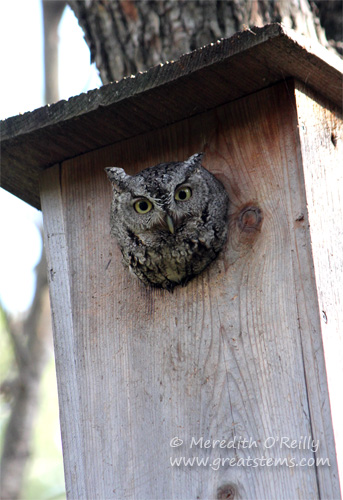
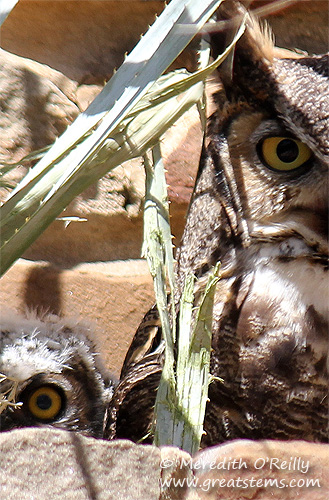
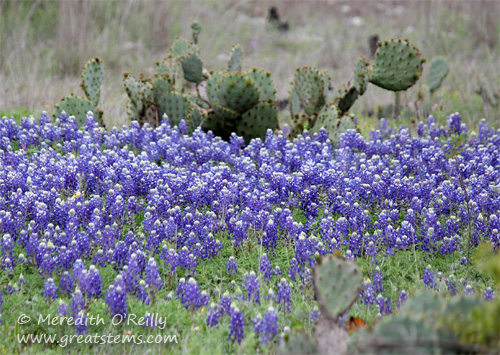 Bluebonnets are part of the legume, or bean, family. Like most other members of the legume family, they offer nitrogen-fixation through their root system’s symbiotic relationship with Rhizobia bacteria, giving them the excellent ability of being able to grow in poor, disturbed soils and at the same time bringing nitrogen back to that poor soil when they decompose.
Bluebonnets are part of the legume, or bean, family. Like most other members of the legume family, they offer nitrogen-fixation through their root system’s symbiotic relationship with Rhizobia bacteria, giving them the excellent ability of being able to grow in poor, disturbed soils and at the same time bringing nitrogen back to that poor soil when they decompose.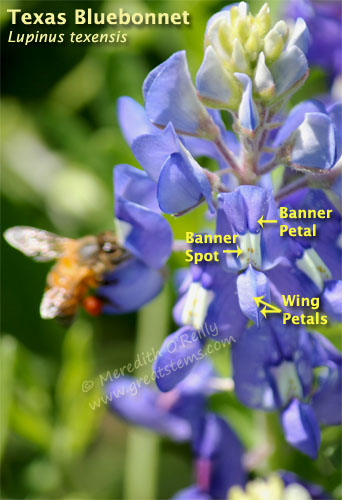
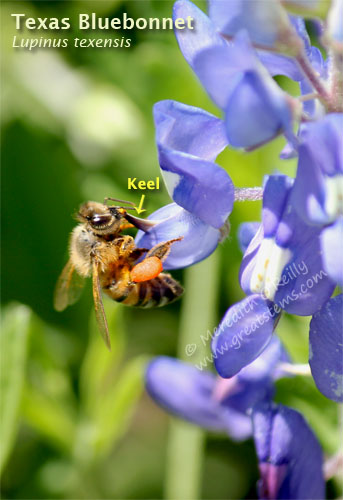
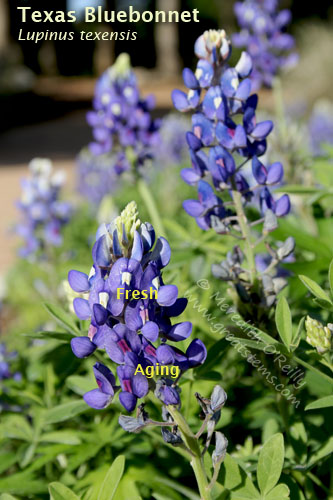 Any given bluebonnet is likely to show both fresh florets and aging florets. Even though a magenta banner spot indicates that a floret’s pollen has lost its viability, the floret may, of course, produce seeds if it was pollinated while it was fresh.
Any given bluebonnet is likely to show both fresh florets and aging florets. Even though a magenta banner spot indicates that a floret’s pollen has lost its viability, the floret may, of course, produce seeds if it was pollinated while it was fresh.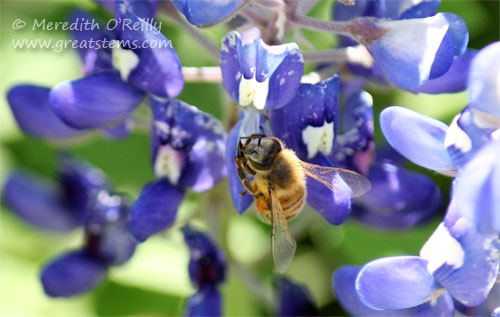 Because bluebonnets cannot self-fertilize, the decline in bee populations has a direct effect on how many seeds a bluebonnet can produce. One plant has the potential to produce many hundreds of seeds, but often only a small number typically result, simply due to the decrease in pollinator numbers. Please protect our pollinators and our wildflowers by not using pesticides!
Because bluebonnets cannot self-fertilize, the decline in bee populations has a direct effect on how many seeds a bluebonnet can produce. One plant has the potential to produce many hundreds of seeds, but often only a small number typically result, simply due to the decrease in pollinator numbers. Please protect our pollinators and our wildflowers by not using pesticides!
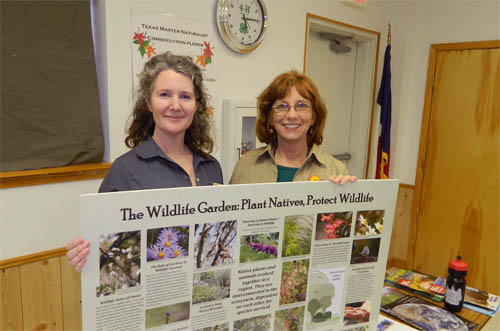 Lee F. of
Lee F. of 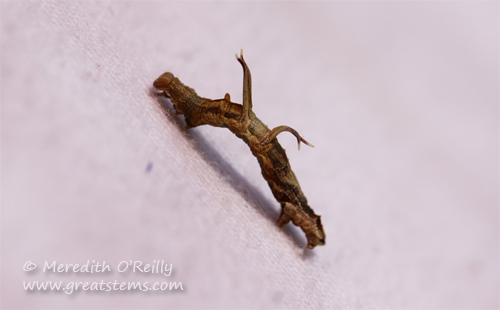
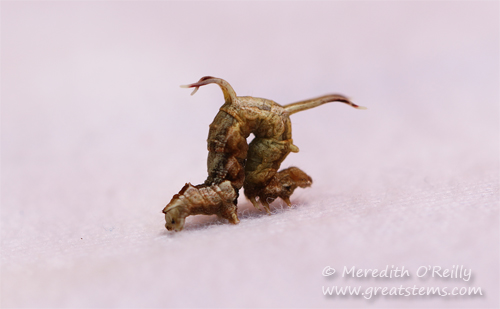 As near as I can tell, this inchworm is one of just a few species that have filaments — in the United States, there are primarily three recognized species. Ours appears to be Nematocampa resistaria, or
As near as I can tell, this inchworm is one of just a few species that have filaments — in the United States, there are primarily three recognized species. Ours appears to be Nematocampa resistaria, or 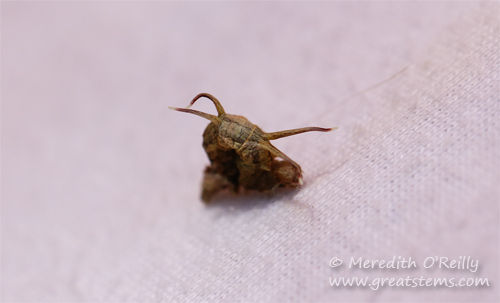
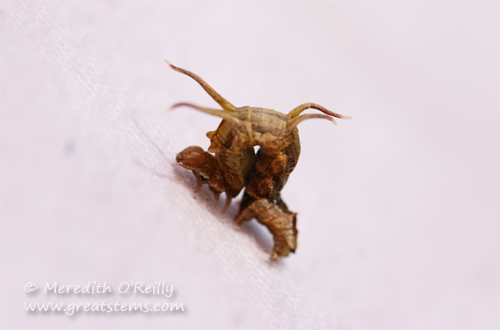 The length of the pale-tipped filaments on our little inchworm indicate that it was actually a little concerned by our presence (not that we were the ones invading its space this time, mind you — it was the other way around!). When relaxed, the inchworm’s filaments aren’t quite as long. When alarmed, it pumps hemolymph into them, which extends them — like spider legs, oooOOOoooh.
The length of the pale-tipped filaments on our little inchworm indicate that it was actually a little concerned by our presence (not that we were the ones invading its space this time, mind you — it was the other way around!). When relaxed, the inchworm’s filaments aren’t quite as long. When alarmed, it pumps hemolymph into them, which extends them — like spider legs, oooOOOoooh.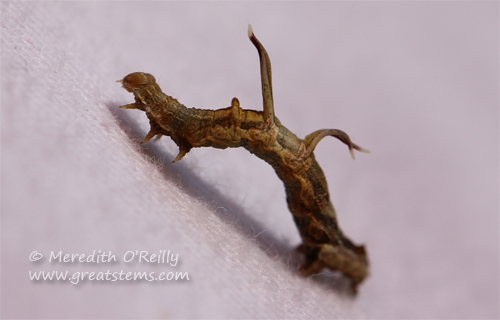 Remember, these little guys and other caterpillars have an important role in the ecosystem as food sources for birds and other animals — don’t squish them!
Remember, these little guys and other caterpillars have an important role in the ecosystem as food sources for birds and other animals — don’t squish them!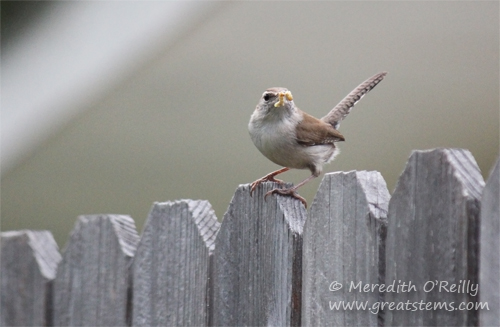












 American Smoke Tree
American Smoke Tree
